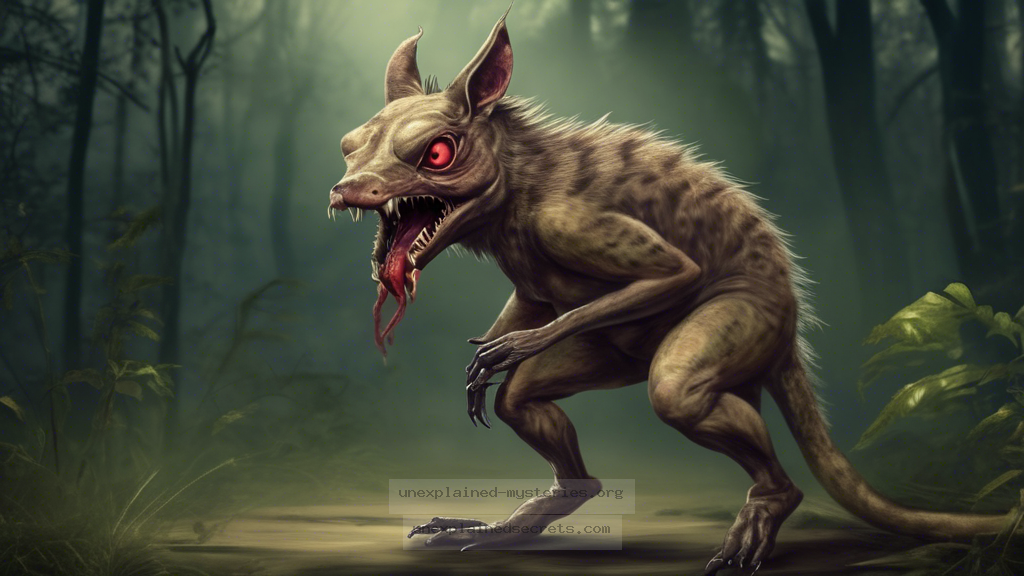What Is the Mystery Behind the Chupacabra: Fact or Fiction?
What Is the Mystery Behind the Chupacabra: Fact or Fiction?
The legend of the Chupacabra has captivated the imaginations of cryptozoologists and laypeople alike since it first emerged in the mid-1990s. This infamous creature, known for allegedly attacking livestock and draining their blood, raises significant questions about its origins, sightings, and the implications of its existence. Understanding the Chupacabra mystery is crucial not only for those interested in cryptozoology but also for the broader discussion surrounding animal folklore and the human tendency to explain the unexplained. In this post, we will delve into the history, theories, evidence, misconceptions, and future investigations relating to this cryptid, providing a comprehensive overview of this fascinating enigma.
The Origins of the Chupacabra Legend
The Chupacabra, which translates to “goat-sucker” in Spanish, first gained notoriety in Puerto Rico in the 1990s. Reports surfaced of livestock, particularly goats, being found drained of blood with mysterious puncture wounds. The initial sightings described a creature that was reptilian in appearance, often with spikes along its back. The phenomenon quickly spread beyond Puerto Rico, leading to reports from various regions in the Americas, including the United States and Mexico. As the legend evolved, so did the descriptions of the creature, varying from a small, hairless dog-like animal to a more alien-like being. This evolution reflects not only cultural interpretations but also the natural human instinct to narrate and mythologize experiences that defy explanation.
Core Concepts and Theories Surrounding the Chupacabra
Several theories have emerged regarding the Chupacabra’s identity and existence. Some of the most prominent theories include:
- Myth and Folklore: Many experts argue that the Chupacabra is a product of folklore, a modern myth that arose during a time of social and economic stress in Puerto Rico.
- Misidentified Animals: Some sightings may be attributable to misidentified animals, such as coyotes suffering from mange, a condition that causes hair loss and can lead to the appearance of an emaciated, hairless creature.
- Extraterrestrial Origin: A more outlandish theory posits that the Chupacabra is an alien creature, linking its appearances to UFO sightings in the same regions.
- Genetic Mutations: Genetic anomalies in known species could explain the physical traits attributed to the Chupacabra, leading to the emergence of new sub-species that exhibit unusual characteristics.
Documented Cases and Sightings
Throughout the years, numerous sightings and encounters with the Chupacabra have been reported. Some notable cases include:
- 1995 Puerto Rico: The first reported sightings occurred in Puerto Rico, where several goats were found dead with puncture wounds and drained of blood, sparking media coverage and public interest.
- 2000 in the U.S.: Reports of Chupacabra sightings began emerging in Texas, with witnesses describing strange animals lurking around farms and ranches.
- 2007 in Mexico: A series of livestock attacks led to a media frenzy, with local farmers claiming to have seen the creature attacking their animals at night.
Each reported sighting contributes to the lore of the Chupacabra, often accompanied by photographs or video evidence that, while often inconclusive, keeps the legend alive.
Scientific Investigations and Practical Evidence
While the existence of the Chupacabra remains unverified, some scientists have taken an interest in investigating claims surrounding the creature. DNA analysis of suspected Chupacabra remains has often revealed that these animals were, in fact, canids with mange or other identifiable species. For example, in 2009, a hairless creature found in Texas was examined and identified as a coyote with sarcoptic mange. Such scientific investigations highlight the importance of empirical evidence in debunking or validating cryptid claims.
| Year | Location | Findings |
|---|---|---|
| 2009 | Texas | Coyote with mange identified |
| 2010 | Pennsylvania | Carcass identified as a raccoon |
| 2015 | Puerto Rico | None linked definitively to Chupacabra |
Alternative Perspectives on the Chupacabra
In the realm of cryptozoology, alternative perspectives often emerge. Some argue that the Chupacabra phenomenon is not merely a creature but a manifestation of deep-seated fears about modernity, globalization, and the loss of traditional agricultural practices. This interpretation suggests that the creature serves as a scapegoat for societal anxieties, helping communities cope with changes that threaten their way of life. Moreover, the Chupacabra has become a cultural icon, inspiring movies, books, and merchandise, further embedding it into popular culture.
Common Misconceptions and Clarifications
There are several misconceptions surrounding the Chupacabra that often cloud the discussion:
- All Sightings Are Real: Not every claim of a Chupacabra sighting is credible. Many are exaggerations or fabrications.
- It’s Only Found in Puerto Rico: While it originated there, reports have come from various regions, indicating a broader cultural impact.
- Chupacabra is a Single Species: Descriptions vary widely across sightings, suggesting that multiple factors contribute to the phenomenon.
Best Practices for Investigating Cryptids
For those interested in investigating the Chupacabra or similar cryptids, several best practices can enhance the credibility and effectiveness of research:
- Document Evidence: Always document sightings with photos, videos, and witness statements for thorough analysis.
- Collaborate with Experts: Work with wildlife biologists and ecologists to gain insights into animal behavior and misidentification.
- Maintain Skepticism: Approach claims with a healthy dose of skepticism, seeking empirical evidence before drawing conclusions.
Future Developments and Ongoing Research
The mystery of the Chupacabra continues to intrigue researchers and enthusiasts. Future developments may include:
- Genetic Testing: Continued genetic testing of alleged Chupacabra remains may yield interesting insights into the biological basis of these sightings.
- Cultural Studies: Anthropologists may delve deeper into the cultural implications of the Chupacabra legend, examining its societal impact and evolution.
- Technology in Research: Advances in technology, such as trail cameras and drones, may assist in monitoring areas where sightings are reported.
Conclusion
The Chupacabra remains one of the most compelling mysteries in cryptozoology, embodying a blend of folklore, fear, and the unknown. While scientific investigations tend to debunk many claims as misidentified animals or hoaxes, the cultural significance of the Chupacabra cannot be overlooked. By understanding its origins, examining documented cases, and remaining open to new discoveries, we can appreciate the complexities surrounding this enigmatic creature. Whether fact or fiction, the Chupacabra continues to capture our fascination, urging us to explore the boundaries of what we consider real.
Other Articles
Recent Posts
- What Happened to Flight MH370? The Conspiracy Theories That Still Haunt Us
- What Secrets Lurk Within the Walls of the Infamous Trans-Allegheny Lunatic Asylum?
- What Evidence Supports the Existence of Bigfoot in the Pacific Northwest?
- What Happened to the Indus Valley Civilization? Unraveling the Mysteries of Ancient Urban Life
- Can Telepathy Be Scientifically Proven Through Laboratory Evidence?







